MLB Hall of Fame: Ballot not so sweet for Lou Whitaker

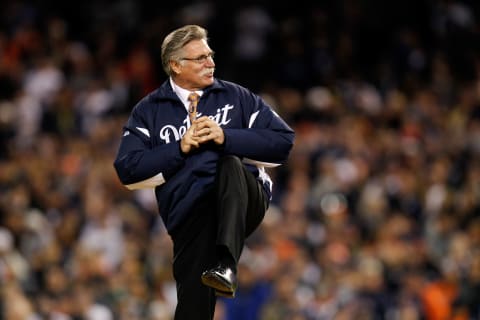
Some of the best players from the 1970s and 80s are on the Modern MLB Hall of Fame ballot, but there were also some major snubs.
The National Baseball Hall of Fame announced the 10-name Modern MLB Hall of Fame ballot today. The names on the ballot made their greatest contribution to baseball from 1970-1987. The ballot consists of nine players, all still living, and one executive, the late Marvin Miller, who was the executive director of the MLB Players Association during the most tumultuous time in its history.
The committee voting on these candidates consists of a 16-member panel of MLB Hall of Fame members, executives, and veteran media members. According to the MLB Hall of Fame website, the voting “shall be based upon the individual’s record, ability, integrity, sportsmanship, character and contribution to the game.” Electors are limited to four candidates per ballot but can vote for as few as zero. To earn election to the Hall of Fame, a candidate must receive votes on 75 percent of the votes cast..
The Veterans Committee has had difficulty electing players over the last 15 years. From 2002 to 2010, the committee elected one pre-war player (Joe Gordon). In 2010, the Veterans Committee was split into three era-based committees that voted on candidates every three years but still weren’t able to agree on many player candidates. Ron Santo was voted in by the Golden Days Committee in 2012 and Deacon White got the nod by the Pre-Integration Committee in 2013. Managers, umpires, and executives made the cut, but many players failed to reach the bar.
This brought about a new system that divides candidates into four eras: Early Baseball (1871-1949), Golden Days (1950-1969), Modern Baseball (1970-1987) and Today’s Game (1988 on). Last year’s Today’s Game ballot yielded two executives, John Schuerholtz and Bud Selig, but owner George Steinbrenner, managers Lou Piniella and Davey Johnson, and seven players failed to make the cut.
When any Veterans Committee Hall of Fame ballot is announced, it’s always interesting to see who made the list and who didn’t. This year’s Modern Baseball ballot consists of one catcher, two first baseman, one shortstop, two outfielders, three starting pitchers, and executive Marvin Miller. Here is a closer look at the players who are on the ballot and some who were left out in the cold.
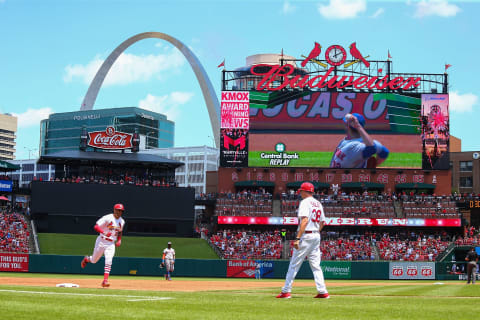
Catcher: Played from 1968 to 1988
- .285/.348/.437, 116 wRC+, 54.2 WAR
- All-time rank at position: 9th
- Positional rank from 1970-1987: 4th
A note on the statistics above: the triple-slash line is batting average/on-base percentage/slugging percentage. The metric wRC+ is a measure of a player’s offensive production and is adjusted for league and ballpark effects where 100 is average, and anything higher is above average. Simmons’ 116 wRC+ means he was 16 percent better than average after adjusting for league and ballpark effects.
WAR stands for Wins Above Replacement (Fangraphs version). It’s a measure of a player’s total value. It’s not foolproof, but it provides a good estimate of how valuable that player was over his career.
Ted Simmons was a hard-hitting catcher who spent most of his career with the and Milwaukee Brewers. He was an eight-time All-Star and earned MVP votes in seven different seasons, with a high finish of sixth in 1975. He had a 10-year stretch from 1971 to 1980 during which he averaged nearly 5 WAR per season.
The Modern Baseball stretches from 1970 to 1987 and Simmons is clearly on the same tier as Hall of Fame catcher Carlton Fisk for this time period. Simmons had 54.8 WAR from 1970 to 1987. Fisk had 55.2. The catcher below Simmons is Gene Tenace, who had nine fewer wins above replacement than Simba. The top tier of catchers in the Modern Baseball should include Johnny Bench, Gary Carter, Carlton Fisk, and Ted Simmons.
On the all-time list, Simmons is ninth in Fangraphs WAR, just behind Bill Dickey and ahead of Gabby Hartnett and Mickey Cochrane, all of whom are in the Hall of Fame. Joe Torre is the only catcher who ranks higher than Simmons in WAR which is not in the Hall of Fame as a player (Torre is in as a manager). It should be noted that Simmons played 1771 games at catcher while Torre played just 903 at catcher and a combined 1300 games at other positions.
My Verdict: Ted Simmons should be in the Hall of Fame
Ballot Snub: None

First Base: Played from 1982 to 1995
- .307/.358/.471, 124 wRC+, 40.7 WAR
- All-time rank at position: 51st
- Positional rank from 1970-1987: 21st
Mattingly’s career occupies some of the Modern Baseball and some of the Today’s Game Era. He came up to the big leagues for a cup of coffee with the Yankees in 1982, played 91 games for them in 1983, and finally busted out with his first great year in 1984.
He had his best stretch of play from 1984 to 1987 but continued to play until 1995. If you have to put him in one era over another, it makes sense to put him in the Modern Baseball, because that’s when he was at his very best.
When Mattingly was good, he was really good. He won the AL MVP Award in 1985 when he led the league in RBI and doubles. He finished second the following year when he led the league in hits, doubles, and slugging percentage.
He was the face of the Yankees in the mid-1980s, the guy known as “Donnie Baseball” who once helped himself to a handful of a young fan’s popcorn on a foul ball into the seats.
As good as he was at his peak, Mattingly’s back injuries hampered his power output and cut into his value during the last half of his career. He ranks 51st all-time among first baseman in Fangraphs WAR, which is below Mark Grace, Mark Teixeira, and Carlos Delgado, among many others.
My Verdict: No on Donnie Baseball for the MLB Hall of Fame.
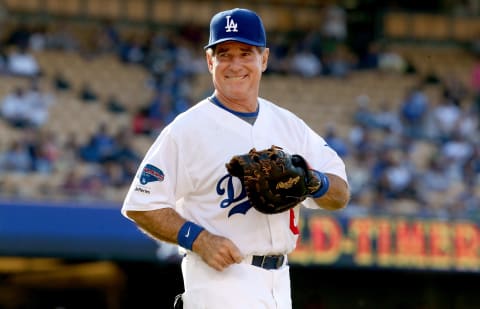
Steve Garvey: Played from 1967 to 1987
- .294/.329/.446, 116 wRC+, 37.8 WAR
- All-time rank at position: 53rd
- Positional rank from 1970-1987: 11th
Steve Garvey fits better than Mattingly on the Modern MLB Hall of Fame ballot because nearly his entire career occurred during this time period. He was a very dependable bat for the Los Angeles Dodgers who made the All-Star team eight straight years from 1974 to 1981. He also received NL MVP votes in each of those years, which included winning the award in 1974 and finishing second in 1978. From 1974 to 1977, he won the Gold Glove Award four straight years for his play at first base.
In some ways, Garvey is a victim of the statistical analysis movement. When he played, getting hits, hitting for average and driving in runs were awarded by All-Star appearances and MVP votes. Garvey hit over .300 seven times in eight years during his peak. He also had 200 hits six times and drove in 100 or more runs five times.
Despite excelling in these traditional statistics, Garvey value takes a hit because of a relatively low career on-base percentage (.329) and slugging percentage (.446) and a negative view of his defense. He ranks 53rd all-time among first baseman in Fangraphs WAR, where he’s tied with Adrian Gonzalez. Is Adrian Gonzalez a Hall of Famer? I say no and Steve Garvey isn’t either.
My Verdict: No on Steve Garvey for MLB Hall of Fame
Ballot Snubs: Darrell Evans (61.2 WAR), Keith Hernandez (59.4 WAR)
Darrell Evans and Keith Hernandez are both more deserving of a spot on the Modern Baseball ballot than Mattingly and Garvey. Evans ranks 21st all-time among first baseman, and Hernandez is close behind him, at 23rd all-time.
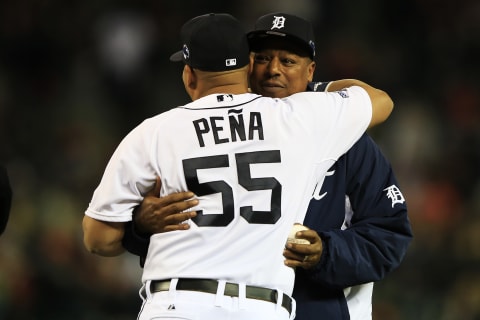
Second Base
There were no second baseman named on the Modern MLB Hall of Fame, but two significant snubs.
Ballot Snubs: Bobby Grich (69.2 WAR), Lou Whitaker (68.1 WAR)
Two egregious snubs on the Modern Baseball ballot are a pair of very good second basemen who don’t get the credit they deserve. Bobby Grich and Lou Whitaker are two of the ten best second baseman to ever play the game. They are right behind Rod Carew on the all-time list and ahead of Craig Biggio.
Grich didn’t hit for the batting average that Rod Carew did, but he was still close to Carew in offensive production (129 wRC+ to 132 wRC+) and made up some of that difference on defense. Both played more than 2000 games in the big leagues, and Carew had just three more wins above replacement than Grich.
As for Lou Whitaker, it’s shocking that a ballot for this time period could include Alan Trammel and Jack Morris, but not Lou Whitaker. Not only were all three players key members of the great Detroit Tigers team in 1984, but Trammell and Whitaker went together like peanut butter and jelly during their playing days. They played alongside each other for nearly two decades.
Based on Fangraphs WAR, Grich ranks eighth, and Whitaker ranks ninth all-time among second baseman. That’s higher than Hall of Famers Craig Biggio, Roberto Alomar, Ryne Sandberg, and Joe Gordon.
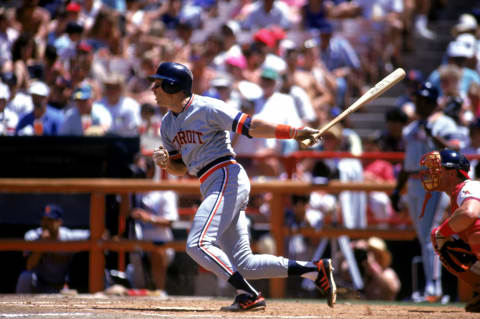
Shortstop
Alan Trammell: Played from 1977 to 1996
- .285/.352/.415, 111 wRC+, 63.7 WAR
- All-time rank at position: 12th
- Positional rank from 1970-1987: 3rd
Trammell’s career doesn’t line up well with the 1970-1987 bracket. He came up in 1977 and played until 1996. Most of his career value came during the first 11 years of his career, but he also had a handful of good seasons after 1988. He was a six-time All-Star and received MVP votes in seven years, including a second-place finish in 1987. George Bell won the Award that year, but it really should have been Trammell’s.
When looking at players in the history of baseball who played a significant number of games at shortstop, there are some defined tiers that can be identified. Honus Wagner and Alex Rodriguez tower over the rest of the field with more than 100 WAR each. Cal Ripken, Jr. is on a tier of his own (92.5 WAR), then there’s a group of three in the 70s that includes Luke Appling, Arky Vaughn, and Derek Jeter.
Eight shortstops sit in the 60-67 WAR range, including Allan Trammell. He’s right there with Lou Boudreau, Ernie Banks, and Pee Wee Reese. Then there’s a sizeable gap to Joe Tinker, the famous shortstop in the “Tinkers to Evers to Chance” poem. Of these 15 shortstops, only Alan Trammel is not in the Hall of Fame. He should be.
My Verdict: Yes on Alan Trammel for the MLB Hall of Fame
Ballot Snubs: None
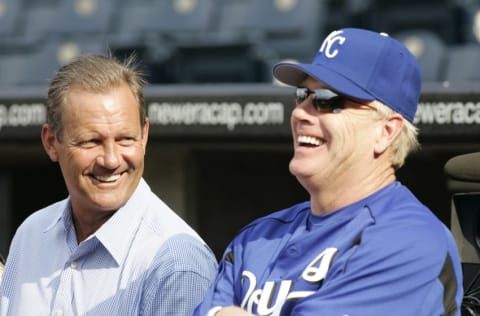
Third Base
There were no third baseman named on the Modern MLB Hall of Fame ballot, but two significant snubs.
Biggest Snubs: Graig Nettles (65.7 WAR), Buddy Bell (61.7 WAR)
The dominant third baseman during the Modern Baseball era was Mike Schmidt, who amassed more than 100 WAR over this stretch. He was an incredible force of offense and defense. Next on the list at the position is the great George Brett. Then come Graig Nettles and Buddy Bell. According to Fangraphs WAR, Nettles is the 14th-best third baseman of all-time and Bell is 16th (Edgar Martinez is in between them).
Nettles and Bell weren’t the hitters that Schmidt and Brett were, but they were both very good with the glove and held their own at the plate. Nettles had a nice stretch of nine seasons from 1970 to 1978 during which he averaged 5.5 WAR per season. These were the famous “Bronx Zoo” Yankees and Nettles was a big part of the back-to-back World Series championship teams in 1977-78. He made some incredible plays on defense in the 1978 series.
As good as Nettles was on defense, Buddy Bell was even better. A few years after Brooks Robinson retired, Bell started winning Gold Glove awards. He won six straight from 1979 to 1984. He was also an All-Star four times during this stretch and named on MVP ballots five times.
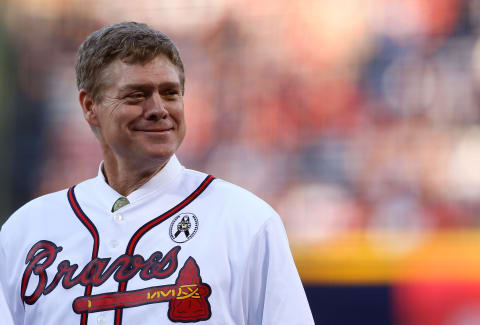
Outfielders
Dale Murphy: Played from 1976 to 1993
- .265/.346/.469, 119 wRC+, 44.3 WAR
- All-time rank at position: 97th
- Positional rank from 1970-1987: 21st
Dale Murphy’s career extended seven years beyond the time period that defines the Modern MLB Hall of Fame ballot, but it doesn’t really matter because he didn’t do much in those seven years. Murphy’s Hall of Fame case really comes down to about six good seasons spread out over an eight-year period from 1980 to 1987. He famously won back-to-back NL MVP Awards in 1982 and 1983 when he led the NL in RBI both years. He was an All-Star seven times in eight years, including six in a row, and won the Gold Glove Award five straight times.
Peak Dale Murphy was a very good player. He was a big guy who played 162 games four years in a row and averaged 36 homers per year over a six-year period. Then, quite suddenly at the age of 33, that was it. Over the last five years of his career, Murphy hit .236/.304/.388 while averaging just 101 games per year. Murphy was a great guy by all accounts, but I don’t believe he was a MLB Hall of Fame
My Verdict: No on Dale Murphy
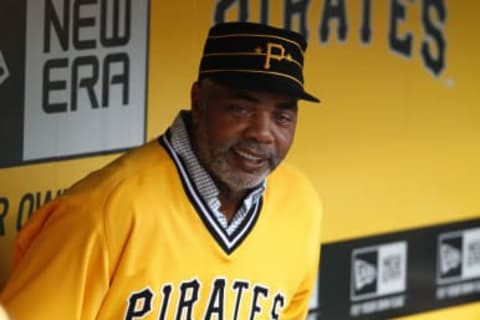
Dave Parker (played from 1973 to 1991)
- .290/.339/.471, 120 wRC+, 41.1 WAR
- All-time rank at position: 118th
- Positional rank from 1970-1987: 20th
In the interest of full disclosure, I must admit that my favorite all-time baseball team is the 1979 “We R Fam-A-Lee” Pittsburgh Pirates. Dave “Cobra” Parker was a key member of that team and the other good teams in Pittsburgh during those years. Willie Stargell was my favorite player, but I also loved watching Dave Parker, Bill Madlock, John Candelaria, Kent Tekulve, and so many others on that squad.
As much as I love my childhood team and the big right fielder nicknamed “Cobra,” I don’t believe Dave Parker is a Hall of Fame player. He had a great stretch of five years from 1975 to 1979 during which he averaged just over 6 WAR per season, but these five seasons accounted for nearly 75 percent of his career value. Other than this five-year stretch, he had just one above-average season.
My Verdict: No on Dave Parker, with apologies to my eight-year-old self
Ballot Snubs: Dwight Evans (65.1 WAR), Reggie Smith (64.6 WAR)
Dwight Evans is the Bobby Grich of outfielders. Both are very underappreciated. By Fangraphs WAR, Evans was the second most valuable outfielder from 1970-1987 and Reggie Smith comes in fifth. On the all-time list, Evans ranks 30th, just behind Tim Raines and ahead of Tony Gwynn. After Gwynn comes Reggie Smith, ranking 32nd. Both Evans and Smith were more valuable than Hall of Famers Willie Stargell, Billy Williams, Dave Winfield, and Andre Dawson, among others.

Starting Pitchers
Tommy John (pitched from 1963 to 1989)
- 288-231, 4710.3 IP, 3.34 ERA, 3.38 FIP, 79.4 WAR
- All-time rank at position: 20th
- Positional rank from 1970-1987: 10th
Tommy John’s placement on the Modern MLB Hall of Fame ballot is interesting because his career started many years before the initial year of the ballot’s time period and finished the year after the ballot’s cutoff point. That’s what happens when you spend 26 seasons in the big leagues (1963 to 1989, minus the 1975 season).
Current baseball fans hear Tommy John’s name on a regular basis because of the surgery named after him. Many probably don’t realize that he was a very good pitcher, a Hall of Fame-worthy pitcher. Before he had the surgery that would be named after him, he was 124-106 with a 2.97 career ERA. He had already pitched more than 2000 innings.
The surgery caused him to miss the entire 1975 season, but he came back in 1976 and pitched 207 innings with a 3.09 ERA. He then won 20 games for the first time in 1977 and finished second in NL Cy Young voting. He would have two more 20-win seasons and two more top-five finishes in NL Cy Young voting, including another second-place finish in 1979.
John finished his career with 288 wins and an ERA that was 11 percent better than league average during his career. If he had picked up another 12 wins somewhere along the way, he would likely already be in the Hall of Fame. By Fangraphs WAR, he’s the 20th-best pitcher ever to take the mound. During the Modern Baseball time period, he was the 10th-best pitcher.
My Verdict: Yes, put Tommy John in the MLB Hall of Fame!

Jack Morris (pitched from 1977 to 1994)
- 254-186, 3824 IP, 3.90 ERA, 3.94 FIP, 55.8 WAR
- All-time rank at position: 58th
- Positional rank from 1970-1987: 24th
Jack Morris came excruciatingly close to induction to the MLB Hall of Fame by the BBWAA. He was on the ballot for a full 15 years and peaked at 67.7 percent of the vote in his 14th year. The bar for entry is 75 percent, and many people thought he would get the necessary votes in the last year he was eligible, but he dropped to 61.5 percent and is still on the outside looking in.
He had some incredible moments. He was the ace of the 1984 Detroit Tigers team that started the year 35-5 on their way to a World Series Championship. He also pitched an epic 10-inning shutout in Game 7 of the 1991 World Series to help the Minnesota Twins win a World Series title.
Those are a couple of the big moments his fans remember. They seem to forget that he lost his lone start in the 1987 ALCS when he allowed six earned runs in eight innings. He was even worse in the 1992 postseason when he went 0-3 with a 7.43 ERA in four starts.
Morris’ Hall of Fame case is built more on big moments and great memories than effectiveness over an extended period of time. His career 3.90 ERA is just five percent better than league average. He was a workhorse for sure, averaging 261 innings per year over a seven-year stretch in his prime, but he also never once had an ERA below 3.00 in a season and only once had an ERA below 3.25.
My Verdict: No on Jack Morris (ducks an incoming barrage of criticism)
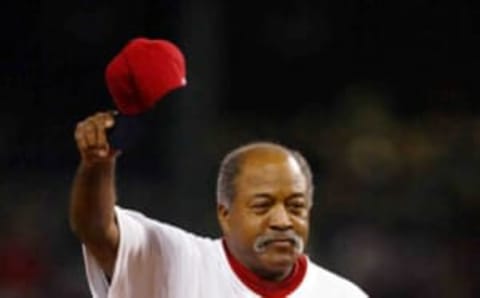
Luis Tiant (pitched from 1964 to 1982)
- 229-172, 3486.3 IP, 3.30 ERA, 3.47 FIP, 55.2 WAR
- All-time rank at position: 60th
- Positional rank from 1970-1987: 22nd
Luis Tiant is another guy who had a portion of his career outside of the window demarcated by the Modern Baseball ballot. In fact, Tiant’s best year was his incredible 1968 season in which he was 21-9 with a 1.60 ERA. He finished fifth in AL MVP voting that year.
He also had some good years during the 1970-1987 period, including three 20-win seasons and three years in which he finished in the top six in AL Cy Young voting. He led the league in ERA in 1972 and WHIP in 1973. During the epic 1975 World Series between the Boston Red Sox and Cincinnati Reds, Tiant started three games and won two. He also had a terrific twisting, spinning wind-up that was fun to watch:
Tiant was a good major league pitcher, right in the range of Jack Morris and Bret Saberhagen, but not MLB Hall of Fame good. If there were a second-tier Hall of Fame, perhaps all three of those aforementioned pitchers would make it.
My Verdict: No on Luis Tiant for the MLB Hall of Fame, but yes for the Pitching Wind-up Hall of Fame
Ballot Snub: Rick Reuschel (68.5 WAR)
Reuschel had more Fangraphs WAR than Morris and Tiant and was more valuable during the specific time period the Modern MLB Hall of Fame ballot encompasses. He ranks 27th all-time among pitchers in Fangraphs WAR. That being said, I wouldn’t put Reuschel in the Hall of Fame just yet, not when there are pitchers from later eras who are more deserving, like Mike Mussina and Curt Schilling.

Executive and My Personal Ballot
Marvin Miller
Marvin Miller is the Babe Ruth of baseball executives. Babe Ruth changed the sport by ushering in a new era of offense. Before Babe Ruth (and the lively ball), baseball was a game of small ball, with bunting, the hit-and-run, and base-stealing reigning supreme. Ruth changed that when he started hitting more home runs in a season than other entire teams.
Miller had a similar impact, but it wasn’t on the field. He changed the relationship between the owners and players. The biggest change was with the Reserve Clause, which led to free agency. He also brought about collective bargaining, arbitration of grievances by an impartial party, agent representation, and the ability to refuse a trade after a player has accrued enough service time. Salaries for active players increased dramatically during his tenure as head of the MLBPA and retired players saw an increase in their pensions. Miller should have been in the Hall of Fame years ago.
My take on the Modern MLB Hall of Fame Ballot:
- C Ted Simmons—Yes
- 1B Don Mattingly—No
- 1B Steve Garvey—No
- SS Alan Trammell—Yes
- OF Dale Murphy—No
- OF Dave Parker—No
- SP Tommy John—Yes
- SP Luis Tiant—No
- SP Jack Morris—No
- Marvin Miller—Yes
More from Call to the Pen
- Philadelphia Phillies, ready for a stretch run, bomb St. Louis Cardinals
- Philadelphia Phillies: The 4 players on the franchise’s Mount Rushmore
- Boston Red Sox fans should be upset over Mookie Betts’ comment
- Analyzing the Boston Red Sox trade for Dave Henderson and Spike Owen
- 2023 MLB postseason likely to have a strange look without Yankees, Red Sox, Cardinals
The Modern MLB Hall of Fame Ballot I would have created (with apologies to Buddy Bell, Darrell Evans, and Keith Hernandez):
- C Ted Simmons
- 2B Bobby Grich
- 2B Lou Whitaker
- SS Alan Trammell
- 3B Graig Nettles
- OF Dwight Evans
- OF Reggie Smith
- SP Tommy John
- SP Rick Reuschel
- Marvin Miller
Next: MLB Free Agency 2017-18: Biggest Holes for Every Team
My ballot would have included the four players I would vote for—Ted Simmons, Alan Trammell, Tommy John, and Marvin Miller—along with Bobby Grich, Lou Whitaker, Graig Nettles, Dwight Evans, Reggie Smith, and Rick Reuschel. Everyone has his or her own thoughts on the Hall of Fame. I prefer to vote for the best players, not necessarily the most famous. I realize Don Mattingly, Steve Garvey, Dale Murphy, Dave Parker, and Jack Morris are more famous than the guys I would have on my ballot, but I think my guys were better players.